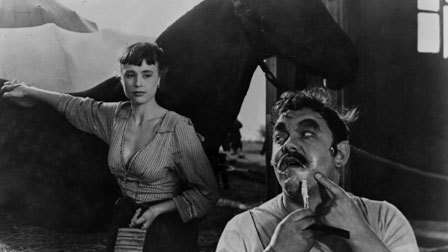1951, TSPDT Rank #416
Throughout his career, but especially in his postwar films, Yasujiro Ozu tended to mine similar themes from one film to the next. Like his previous film, Late Spring, Early Summer is about a young single woman (Setsuko Hara in a practically identical role) whose family wants her to get married before it's too late. However, while the plot initially seems simple and even banal, the film becomes increasingly expansive as it progresses. In comparison, Late Spring is much more confined - a father-daughter story - whereas this film takes the woman's extended family and social circle into consideration. This gives the film an almost sweeping quality, along with a number of great comic scenes along the way which highlight Ozu's unique sense of humor.

The sublime beauty and balance of Ozu's compositions is also stunning throughout. There seem to be entire worlds contained within the ordered confines of the film's simple interior settings, and when Ozu shifts his view to the outside world for a moment, the effect is breathtaking. His timing and pacing are, as always, impeccable in this film. The feeling of intimately knowing a few people within a vast, awe-inspiring world creeps up on you just like Hara's realization that she loves her childhood friend. The last few sequences are particularly powerful, a view of a family in all their imperfections sharing one last fleeting moment before their lives change irrevocably. It was his ability to evoke such powerful and universal emotions that made Ozu one of the great cinematic masters.



